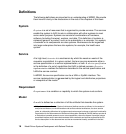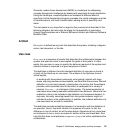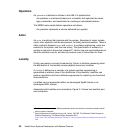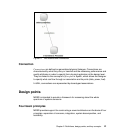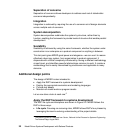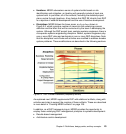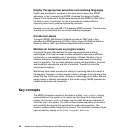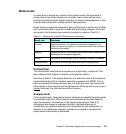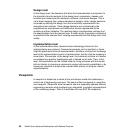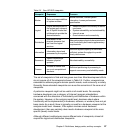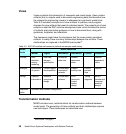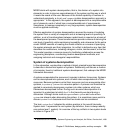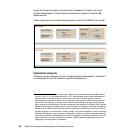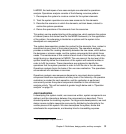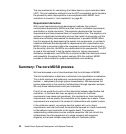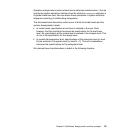26 Model Driven Systems Development with Rational Products
Design level
At the design level, the decisions that drive the implementation are captured. In
the transition from the analysis to the design level, subsystems, classes, and
localities are transformed into hardware, software, and worker designs. This is
not a direct mapping from system elements to designs, rather, design decisions
are made by deriving the design from the functionality represented in the
subsystems and classes. These design decisions are constrained by the
supplementary requirements and distribution choices represented by the
localities and their attributes. The resulting design transformation realizes all of
the specifications from the analysis level. In other words, the system architecture
is specified at the analysis level, creating requirements that the design level must
satisfy.
Implementation level
At the implementation level, decisions about technology choices for the
implementation are captured. Commercial products can be specified, or items
might be specified for internal implementation. As before, moving from the design
level to the implementation level is a transformation, but this time the mapping is
more direct. For example, at the design level, the functional activities of a worker
are mapped to a position specification with a defined set of skills. Then, at this
level, the specification can be fulfilled either by hiring someone with the correct
skill set (similar to choosing a commercial product with certain capabilities) or by
training an individual to acquire the required skills (similar to doing an internal
implementation).
Viewpoints
A viewpoint is defined as a subset of the architecture model that addresses a
certain set of engineering concerns. The same artifact can appear in more than
one viewpoint. Viewpoints allow framework users to separately address different
engineering concerns while maintaining an integrated, consistent representation
of the underlying design. Table 2-2 describes the core RUP SE viewpoints.



